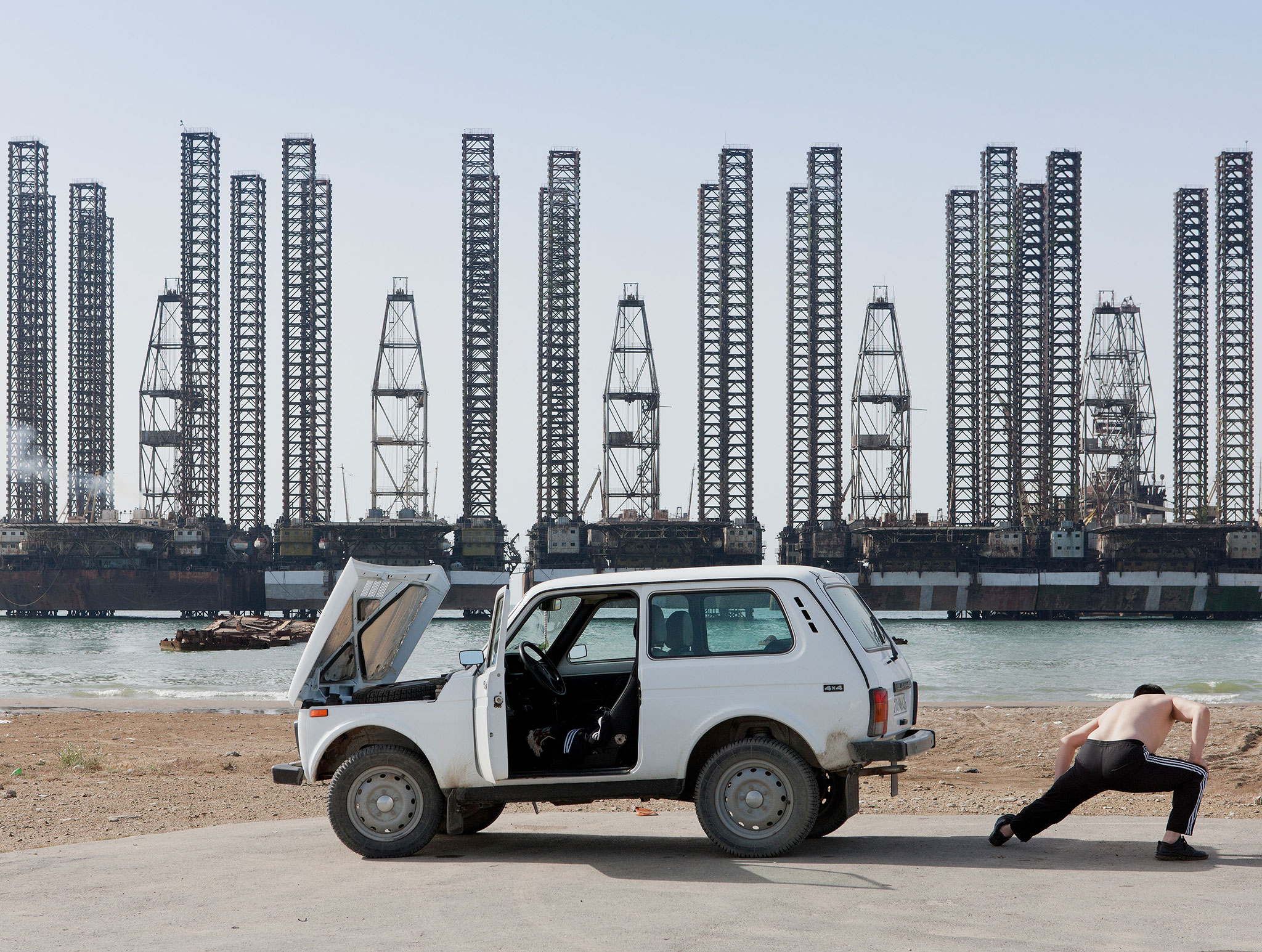Iwan Baan's work approaches architecture by knowing how to stage buildings and also capturing and photographing the moments in which architecture comes to life. With that photographic gaze, he has managed to stage some of the most iconic images of the last 20 years, from the "official" portraits of architectural monuments to the images of Manhattan darkened due to Hurricane Sandy.
The exhibition does not focus on a single area of Baan's photography and displays examples from all areas of Baan's work since the early 2000s, including film material and little-known images of informal buildings, ranging from a circular Chinese village to a monolithic Ethiopian church, from self-build apartments in Cairo to the Tower of David in Caracas.
The exhibition does not focus on a single area of Baan's photography and displays examples from all areas of Baan's work since the early 2000s, including film material and little-known images of informal buildings, ranging from a circular Chinese village to a monolithic Ethiopian church, from self-build apartments in Cairo to the Tower of David in Caracas.
"The important thing is to tell"
"And this is something very intuitive and fluid. I'm not looking for timeless images of great architecture, but more for the specific moment, the place and the people in it, all the unforeseen and unplanned moments in and around a place, how people live there, and what stories emerge from them. it".
Iwan Baan.

Iwan Baan, Baku, Azerbaijan, 2011. Photography by Iwan Baan.
China
The first part of the exhibition shows a series of images that document two monumental projects in Beijing: the CCTV headquarters carried out by the Koolhaas architectural firm, and the Olympic Stadium by Herzog & de Meuron (2003–2008). Baan shows more than the beautiful facades and the daily lives of the bricklayers in these projects. Thanks to numerous unpublished photographs demonstrate the way in which Baan conceives architecture as a process and a social force, as well as a manifestation of China's transformation.
Icons
Iwan Baan's specialization in architecture comes from his meeting with the Dutch architect Rem Koolhaas. The joint work established contacts for Baan with numerous male and female architects. Herzog & de Meuron, Francis Kéré, Sou Fujimoto, Tatiana Bilbao, Diller Scofidio + Renfro, SANAA and Toyo Ito. Most architects rely on his photographic instincts and let him choose the selection of motifs and perspectives himself. Timing is decisive: Instead of waiting for “ideal” conditions, Baan works with the moment. The second part of the exhibition offers an overview of this area of his work with projects such as Zaha Hadid's MAXXI Museum in Rome, passing through SANAA's Rolex Learning Center in Lausanne, and Toyo Ito's National Taichung Theater in Taiwan, Balkrishna Doshi's projects in Ahmedabad.
The first part of the exhibition shows a series of images that document two monumental projects in Beijing: the CCTV headquarters carried out by the Koolhaas architectural firm, and the Olympic Stadium by Herzog & de Meuron (2003–2008). Baan shows more than the beautiful facades and the daily lives of the bricklayers in these projects. Thanks to numerous unpublished photographs demonstrate the way in which Baan conceives architecture as a process and a social force, as well as a manifestation of China's transformation.
Icons
Iwan Baan's specialization in architecture comes from his meeting with the Dutch architect Rem Koolhaas. The joint work established contacts for Baan with numerous male and female architects. Herzog & de Meuron, Francis Kéré, Sou Fujimoto, Tatiana Bilbao, Diller Scofidio + Renfro, SANAA and Toyo Ito. Most architects rely on his photographic instincts and let him choose the selection of motifs and perspectives himself. Timing is decisive: Instead of waiting for “ideal” conditions, Baan works with the moment. The second part of the exhibition offers an overview of this area of his work with projects such as Zaha Hadid's MAXXI Museum in Rome, passing through SANAA's Rolex Learning Center in Lausanne, and Toyo Ito's National Taichung Theater in Taiwan, Balkrishna Doshi's projects in Ahmedabad.

Iwan Baan, Kumbh Mela Festival, Prayagraj, India, 2013. Photography by Iwan Baan.
Cities
Thanks to his work, the photographer has managed to explore flourishing megapolises across all continents. Whether in Tokyo, Lagos, São Paulo, or Hongkong, Baan proves to be a chronicler of urban spaces. He repeatedly engages in topics such as the growth of cities, the heritage of the modern age, globalization, and local communities. He dedicates himself with the same interest to urban icons of the modern era such as Brasilia or Chandigarh, as to projects such as the fairgrounds in Dakar, planned in 1975 by Jean-François Lamoureux and Jean-Louis Marin, as well as to the proliferating suburbs of The Angels.
Continuity lines
During his travels, Iwan Baan has photographed both informal and traditional buildings, but throughout he is often interested in housing customs and cultures that have developed over several centuries.
The exhibition at the Vitra Design Museum will serve as a starting point for its celebration in different international museums. An extensive publication with more than 600 photographs belonging to Iwan Baan's work from the last 20 years will be available within the framework of the exhibition.













































